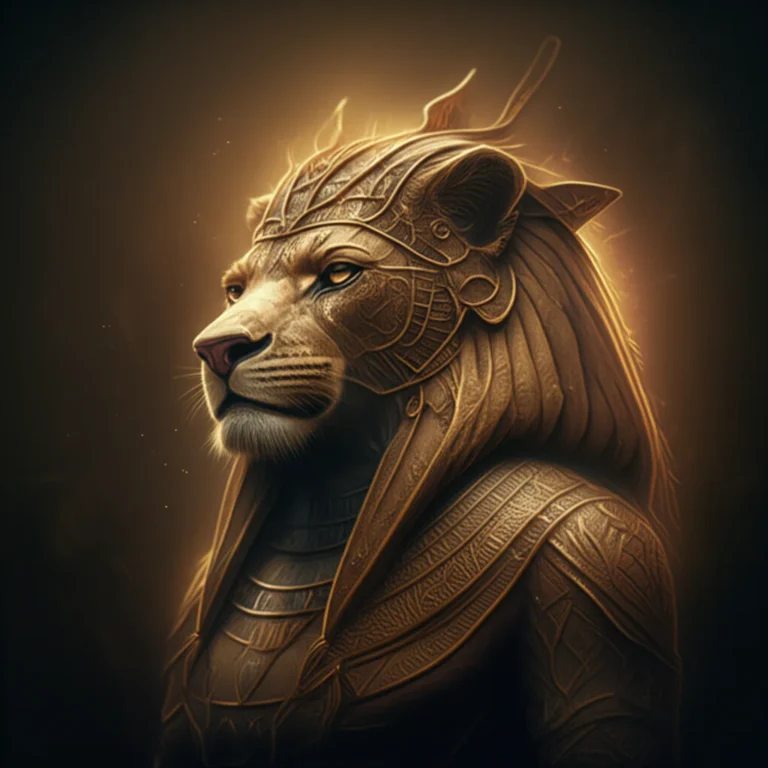Support our educational content for free when you purchase through links on our site. Learn more
Mohenjo-daro Advanced Technology: 11 Ancient Innovations That Still Amaze! 🏛️
Imagine a city built over 4,500 years ago with indoor plumbing, standardized bricks, and a public bath rivaling modern spas — all without electricity or modern machinery. Welcome to Mohenjo-daro, the crown jewel of the Indus Valley Civilization, where urban planning and technology reached heights that continue to baffle historians and engineers alike. But how exactly did this ancient metropolis achieve such sophistication? And what secrets lie buried beneath its ruins that could still inspire us today?
In this article, we unravel 11 groundbreaking technologies pioneered by Mohenjo-daro — from its revolutionary grid layout and advanced water management systems to its precision metallurgy and mysterious script. Whether you’re a history buff, urban planning enthusiast, or just curious about ancient tech, you’ll discover how this lost city set standards that echo into the 21st century. Plus, we’ll explore the enduring mystery of its decline and what lessons modern cities can learn from its legacy. Ready to dive into the marvels of Mohenjo-daro’s advanced technology? Let’s get started!
Key Takeaways
- Mohenjo-daro was a pioneer in urban planning, featuring a precise grid layout and zoning that optimized city life.
- The city boasted advanced sanitation and water systems, including private bathrooms connected to covered drains and the iconic Great Bath.
- Standardized bricks, weights, and measures reveal a highly organized society with centralized control or guilds.
- Skilled artisans mastered bronze metallurgy, textile production, and intricate seal carving, reflecting a complex economy and culture.
- Despite its brilliance, Mohenjo-daro’s decline remains an enigma, likely tied to environmental and social factors.
- Modern urban planners can learn from Mohenjo-daro’s sustainable water management and public health innovations.
If you’re fascinated by ancient craftsmanship and want to explore related artifacts or books, check out these categories:
- 👉 Shop Archaeology & History Books on Amazon:
Amazon History Books - Explore Bronze Age Tools & Replicas:
Amazon Bronze Age Tools
Dive deeper into history’s hidden marvels with History Hidden™!
Table of Contents
- ⚡️ Quick Tips and Facts
- 🕰️ Unearthing Mohenjo-daro: A Journey into Ancient Indus Valley Innovation
- 🏗️ The Master Planners: Mohenjo-daro’s Revolutionary Urban Design & Engineering
- 💧 Water Wizards: Mohenjo-daro’s Unparalleled Hydraulic Engineering
- 🛠️ Beyond the Bricks: Advanced Craftsmanship, Metallurgy, and Measurement
- 🌾 Daily Life, Advanced Living: Technology’s Role in Mohenjo-daro Society
- 🤔 The Enduring Enigma: Unanswered Questions About Mohenjo-daro’s Decline
- 🌍 Mohenjo-daro’s Enduring Legacy: Lessons for Modern Urban Planning
- ✨ Conclusion: Echoes of Ancient Innovation
- 🔗 Recommended Links
- ❓ FAQ
- 📚 Reference Links
⚡️ Quick Tips and Facts
Welcome to the fascinating world of Mohenjo-daro’s advanced technology! At History Hidden™, we love diving into the marvels of ancient civilizations, and Mohenjo-daro is a treasure trove of innovation that still blows our minds. Here’s a quick snapshot before we plunge deeper:
- Location: Modern-day Sindh, Pakistan, on the Indus River.
- Era: Flourished around 2600–1900 BCE during the Mature Harappan phase.
- Population: Estimated 40,000 at its peak — a mega-city for its time!
- Urban Planning: First known city with a grid layout and sophisticated zoning.
- Sanitation: Houses had indoor bathrooms connected to a complex drainage system — ancient plumbing that rivals Rome’s!
- Water Management: The famous Great Bath was a public bathing pool with waterproof brickwork.
- Standardization: Bricks, weights, and measures were uniform across the city.
- Metallurgy: Skilled in bronze casting and copper alloys.
- Trade: Connected to Mesopotamia via maritime routes.
- Decline: Possibly due to river course changes and climate shifts.
Curious about how they pulled off such feats without modern tools? Stick with us — the story gets juicier! For a sneak peek into ancient mysteries, check out our article on The Anunnaki and Ancient Astronauts. 🚀
🕰️ Unearthing Mohenjo-daro: A Journey into Ancient Indus Valley Innovation
Mohenjo-daro isn’t just an archaeological site; it’s a time capsule of human ingenuity. Discovered in the 1920s, this city shattered previous assumptions about ancient civilizations in South Asia. Unlike the monumental palaces of Egypt or Mesopotamia, Mohenjo-daro’s greatness lies in its urban sophistication and technological mastery.
The Discovery and Its Impact
British colonial engineers stumbled upon the ruins while building a railway in 1922, initially mistaking them for remnants of a medieval city. But soon, it became clear this was something far older — dating back over 4,500 years. This pushed back the timeline of South Asian civilization by millennia.
The city’s layout, artifacts, and infrastructure revealed a highly organized society with remarkable engineering skills. Mohenjo-daro became the flagship site of the Indus Valley Civilization, showcasing a level of urban planning and technology that still inspires architects and engineers today.
🏗️ The Master Planners: Mohenjo-daro’s Revolutionary Urban Design & Engineering
Mohenjo-daro was a blueprint for urban brilliance. Its planners thought like modern city engineers, balancing functionality, hygiene, and aesthetics.
1. Grid-Planned Cities: A Blueprint for Ancient Urban Living
The city was laid out in a perfect grid pattern, with streets intersecting at right angles — a design that maximized airflow, sunlight, and ease of movement. This was no accident:
- Streets were 12 meters wide on average, wide enough for ox carts.
- The city was divided into two major parts: the Citadel (administrative and religious center) and the Lower Town (residential and commercial areas).
- Houses were built with uniform bricks, ensuring structural stability.
This level of planning was centuries ahead of many contemporary civilizations.
2. Standardized Bricks: The Precision Engineering of the Indus Valley
One of Mohenjo-daro’s standout features is its standardized baked bricks:
| Feature | Description |
|---|---|
| Dimensions | Approximately 7 x 14 x 28 cm (1:2:4 ratio) |
| Material | Fired clay with consistent quality |
| Use | Houses, drainage, public buildings |
| Benefit | Uniformity allowed modular construction and durability |
This standardization hints at a centralized authority or guild system that regulated production — a hallmark of advanced societies.
💧 Water Wizards: Mohenjo-daro’s Unparalleled Hydraulic Engineering
Water management was the crown jewel of Mohenjo-daro’s technology. The city’s engineers mastered hydraulics to ensure clean water and sanitation for thousands.
3. The Great Bath: A Monument to Public Hygiene and Ritual
The Great Bath is arguably Mohenjo-daro’s most famous structure:
- Size: Nearly 12m x 7m, depth about 2.4m.
- Construction: Three layers of bricks with gypsum mortar and bitumen waterproofing.
- Purpose: Likely used for ritual bathing or community hygiene.
- Drainage: Connected to a sophisticated sewage system to drain used water.
This public bathhouse predates Roman baths by millennia and shows a cultural emphasis on cleanliness and social gathering.
4. Sophisticated Drainage Systems: Mohenjo-daro’s Ancient Sewerage Marvel
Almost every house had a private bathroom connected to covered drains running beneath the streets:
- Drains were made of fired bricks, covered with stone slabs.
- Wastewater was channeled to soak pits or the nearby river.
- Vertical terracotta pipes carried waste from upper floors.
- Streets had raised edges to prevent flooding.
This system was so advanced that some experts say it surpassed Roman plumbing in complexity and hygiene.
5. Private Wells & Public Cisterns: Ensuring Water Access for All
Water wasn’t just for the elite:
- Many homes had private wells dug into the water table.
- Public wells and cisterns ensured water supply during dry seasons.
- The city’s location near the Indus River was leveraged with canals and reservoirs.
This ensured a resilient water supply system supporting a large urban population.
🛠️ Beyond the Bricks: Advanced Craftsmanship, Metallurgy, and Measurement
Mohenjo-daro’s technology extended beyond urban design into craftsmanship and science.
6. Precision Weights and Measures: The Indus Valley’s Standardized Economy
Trade and commerce thrived thanks to a system of standardized weights:
| Weight Unit (g) | Description |
|---|---|
| 0.05 | Smallest known weight unit |
| 0.5 | Common trade weight |
| 5 | Larger commercial transactions |
Weights were made of chert and other stones, precisely carved into cubes or rectangles. This decimal system facilitated fair trade and taxation.
7. Bronze Age Brilliance: Mohenjo-daro’s Metallurgical Prowess
The city’s artisans mastered copper and bronze metallurgy:
- Tools: Axes, chisels, knives, arrowheads.
- Techniques: Lost-wax casting for intricate figurines.
- Alloying: Copper with arsenic and tin to create durable bronze.
- Jewelry: Gold and silver ornaments, showcasing aesthetic and technical skill.
This metallurgy supported agriculture, warfare, and art.
8. Intricate Seals and Script: Unlocking Ancient Communication
Seals made from steatite were used for trade and identification:
- Carved with animal motifs like the famous unicorn bull.
- Inscribed with the undeciphered Indus script.
- Likely served as property markers and amulets.
Despite decades of research, the script remains a tantalizing mystery, but advances in AI and linguistics may soon crack the code.
🌾 Daily Life, Advanced Living: Technology’s Role in Mohenjo-daro Society
Technology wasn’t just for infrastructure — it shaped everyday life.
9. Granaries and Food Storage: Feeding a Thriving Civilization
Large granaries stored surplus grain, ensuring food security:
- Built with thick walls and raised platforms to protect from moisture.
- Indicate centralized food distribution and planning.
- Supported a population dependent on agriculture and trade.
10. Pottery and Kilns: Art, Utility, and Technological Advancement
Pottery was mass-produced on wheels:
- Mostly plain red slip ware with black geometric designs.
- Kilns fired pottery at controlled temperatures.
- Some vessels had perforations for specific uses (e.g., strainers).
Pottery was both functional and artistic, reflecting a skilled artisan class.
11. Textile Production: Weaving the Threads of Indus Innovation
Fragments of cotton textiles found at Mohenjo-daro reveal:
- Early use of cotton weaving and dyeing.
- Dye vats suggest knowledge of colorfast dyes.
- Textiles were likely traded regionally, adding to economic complexity.
🤔 The Enduring Enigma: Unanswered Questions About Mohenjo-daro’s Decline
Despite its brilliance, Mohenjo-daro mysteriously declined around 1900 BCE. Scholars debate:
- Environmental causes: River course shifts, flooding, or drought.
- Climate change: Cooling and drying trends disrupted agriculture.
- Social upheaval: Possible internal conflict or economic decline.
- Invasion theories: Once popular but now largely discounted.
The city was gradually abandoned, its advanced systems falling into disrepair. Yet, its legacy remains a beacon of ancient urban achievement.
🌍 Mohenjo-daro’s Enduring Legacy: Lessons for Modern Urban Planning
Mohenjo-daro’s innovations still resonate today:
- Sustainable water management: Modern cities can learn from its drainage and sanitation.
- Standardization: Uniform building materials and measurements streamline construction.
- Urban zoning: Separating residential, commercial, and administrative areas improves city life.
- Public health: Emphasis on hygiene and communal spaces enhances wellbeing.
Historians and urban planners alike marvel at how this ancient city anticipated many modern concepts. Mohenjo-daro reminds us that technology and thoughtful design are timeless keys to thriving communities.
If you’re fascinated by ancient tech and want to explore more hidden histories, dive into our Folklore and Legends and Mythology Stories categories for more captivating tales.
Up next: The grand finale — our conclusion and curated resources to keep your curiosity burning!
✨ Conclusion: Echoes of Ancient Innovation
What a journey through the marvels of Mohenjo-daro’s advanced technology! From its meticulously planned grid streets to the ingenious water and sanitation systems, this ancient city was a beacon of human creativity and engineering prowess. The Great Bath alone stands as a testament to their commitment to public hygiene and social cohesion, while the standardized bricks and weights reveal a society that valued precision and order.
While the exact reasons for Mohenjo-daro’s decline remain shrouded in mystery, the legacy of its technological achievements continues to inspire. Its urban planning principles and water management systems offer timeless lessons for modern cities grappling with sustainability and infrastructure challenges.
At History Hidden™, we confidently recommend studying Mohenjo-daro not just as an archaeological curiosity but as a blueprint for innovation that transcends millennia. Its story closes the loop on ancient ingenuity and opens new doors for understanding how civilizations can thrive through smart design and technology.
Ready to dive deeper? Let’s keep exploring history’s hidden gems together!
🔗 Recommended Links
Looking to explore Mohenjo-daro and related ancient technologies further? Here are some excellent resources and books that bring these marvels to life:
-
The Indus Civilization: A Contemporary Perspective by Gregory L. Possehl
Amazon -
Mohenjo-Daro and the Indus Civilization by Mortimer Wheeler
Amazon -
Ancient Cities: The Archaeology of Urban Life in the Ancient Near East and Egypt, Greece, and Rome by Charles Gates
Amazon -
👉 Shop Archaeology & History Books on Amazon:
Amazon History Books
❓ FAQ
What were some of the advanced technologies used in the construction of Mohenjo-daro?
Mohenjo-daro employed standardized fired bricks with precise dimensions, enabling modular construction. The city’s grid layout was revolutionary, with streets intersecting at right angles and zones designated for residential, commercial, and administrative purposes. The use of bitumen waterproofing in structures like the Great Bath and terracotta pipes for drainage exemplify advanced material engineering. These technologies combined to create a durable, hygienic, and well-organized urban environment.
How did the ancient civilization of Mohenjo-daro achieve its sophisticated urban planning and architecture?
The sophistication likely stemmed from a centralized or coordinated authority that regulated construction standards and city layout. Uniformity in brick sizes and weights suggests regulation or guild-like control. The planners prioritized public health, evident in the drainage and sanitation systems, and designed the city to maximize airflow and sunlight. The division into the Citadel and Lower Town reflects thoughtful zoning, balancing administrative needs with everyday life.
What evidence is there of advanced water management systems in Mohenjo-daro?
Archaeological excavations reveal a complex drainage network beneath city streets, with covered brick-lined drains connected to individual homes. The Great Bath was waterproofed with bitumen and layered bricks, showcasing hydraulic engineering. Private wells and public cisterns ensured water availability. Vertical pipes carried wastewater from upper floors to street drains, indicating multi-level plumbing. These systems collectively represent some of the earliest known urban sanitation infrastructure.
Did Mohenjo-daro have a unique system of governance that contributed to its technological advancements?
While no definitive written records explain governance, the uniformity in urban planning, weights, and measures implies a coordinated administrative system. The absence of grand palaces or temples suggests a less hierarchical society, possibly governed by councils or merchant guilds. This decentralized but integrated governance could have fostered technological innovation through collaboration and standardization.
How did the people of Mohenjo-daro develop and utilize their knowledge of metallurgy and craftsmanship?
Mohenjo-daro’s artisans mastered bronze casting using the lost-wax technique, creating tools, weapons, and figurines. They alloyed copper with arsenic and tin for durable bronze. Jewelry crafted from gold, silver, and semi-precious stones like carnelian indicates advanced lapidary skills. The precision in weights and seals reflects a sophisticated understanding of measurement and symbolism, essential for trade and administration.
What role did trade and cultural exchange play in the development of advanced technologies in Mohenjo-daro?
Trade was vital. Mohenjo-daro was part of a vast network extending to Mesopotamia, Central Asia, and beyond. This exchange brought raw materials like tin, lapis lazuli, and cedar wood, and facilitated the spread of ideas and technologies. Harappan seals found in Mesopotamian sites attest to this interaction. Trade likely incentivized standardization in weights and measures and spurred innovations in craft and urban infrastructure.
Are there any theories about the mysterious decline of Mohenjo-daro and its advanced technological achievements?
Several theories exist:
- Environmental change: Shifts in the Indus River’s course may have disrupted water supply.
- Climate shifts: Cooling and drying trends could have undermined agriculture.
- Social factors: Possible internal conflict or economic decline.
- Invasion theories: Once popular but now largely discounted due to lack of evidence.
The decline was likely multifactorial, with environmental stressors playing a major role.
Can the study of Mohenjo-daro’s advanced technologies provide insights into the development of modern cities and urban planning?
Absolutely! Mohenjo-daro’s emphasis on sanitation, standardized construction, zoning, and water management offers timeless lessons. Modern urban planners can learn from its integrated drainage systems and public health focus. The city’s design underscores the importance of planning for sustainability and resilience, principles that remain critical today.
📚 Reference Links
-
Human Progress: Centers of Progress Pt. 3 – Mohenjo-Daro
https://humanprogress.org/centers-of-progress-pt-3-mohenjo-daro-2/ -
Britannica: Indus Civilization – Craft, Technology, and Artifacts
https://www.britannica.com/topic/Indus-civilization/Craft-technology-and-artifacts -
Khan Academy: The Indus River Valley Civilizations (article)
https://www.khanacademy.org/humanities/world-history/world-history-beginnings/ancient-india/a/the-indus-river-valley-civilizations -
UNESCO World Heritage Centre: Mohenjo-daro
https://whc.unesco.org/en/list/138 -
For metallurgy insights, see the Metallurgy section on Britannica
Thanks for exploring Mohenjo-daro’s advanced technology with us at History Hidden™! Stay curious, and keep uncovering the stories that shape our past and future.




